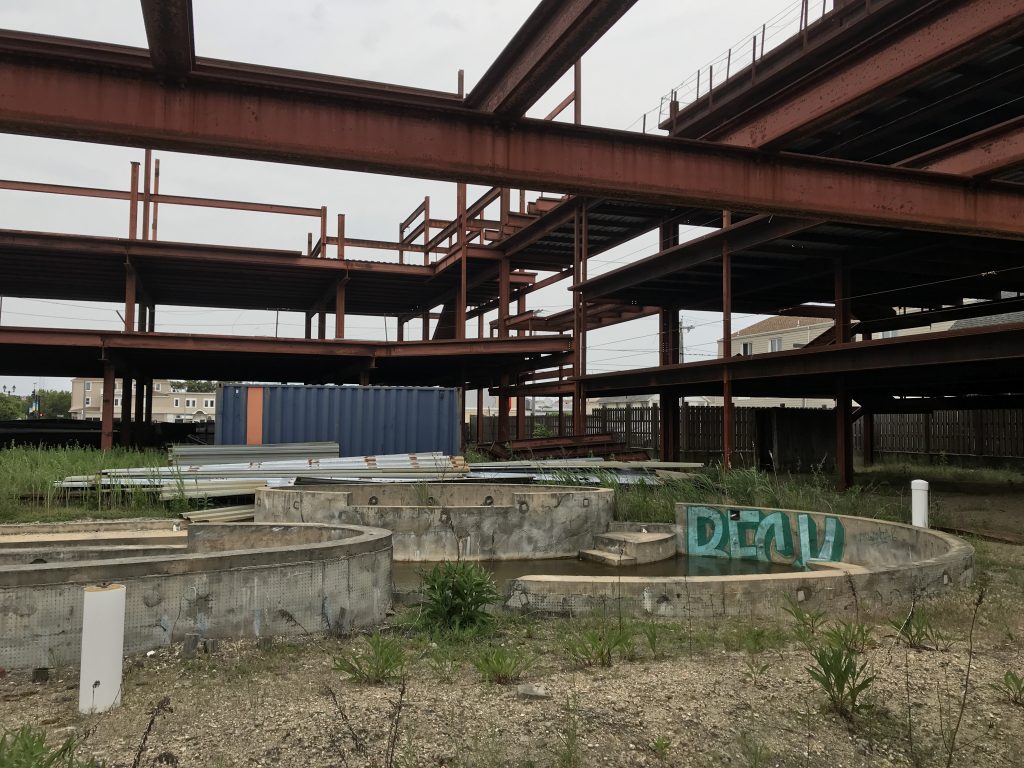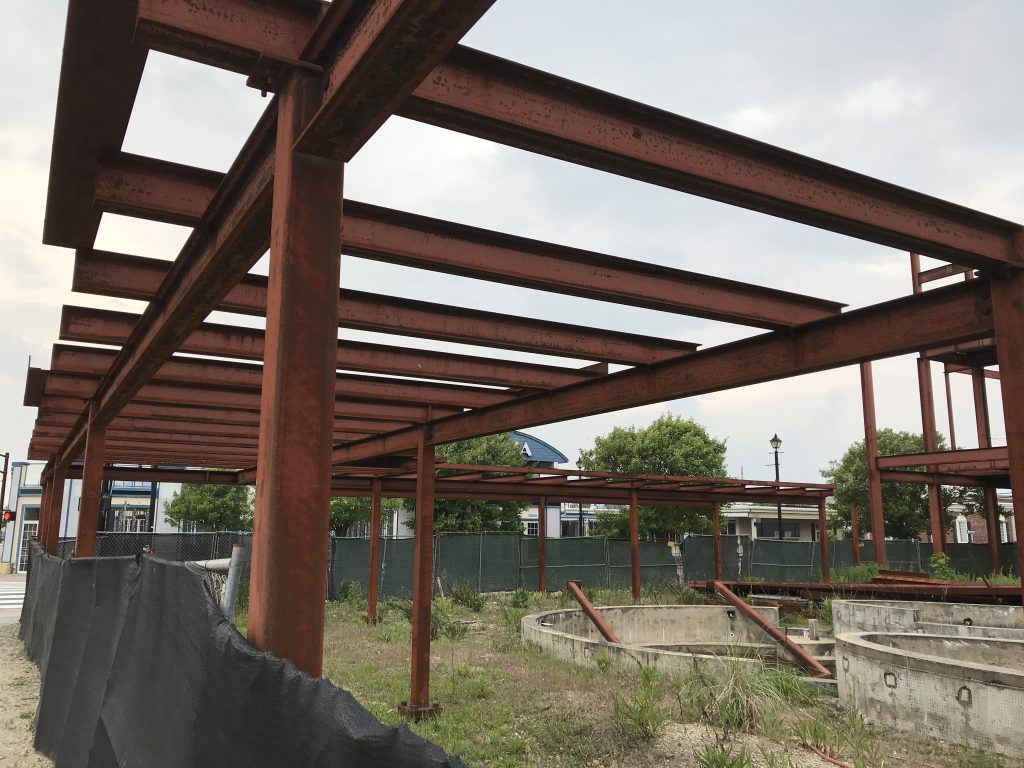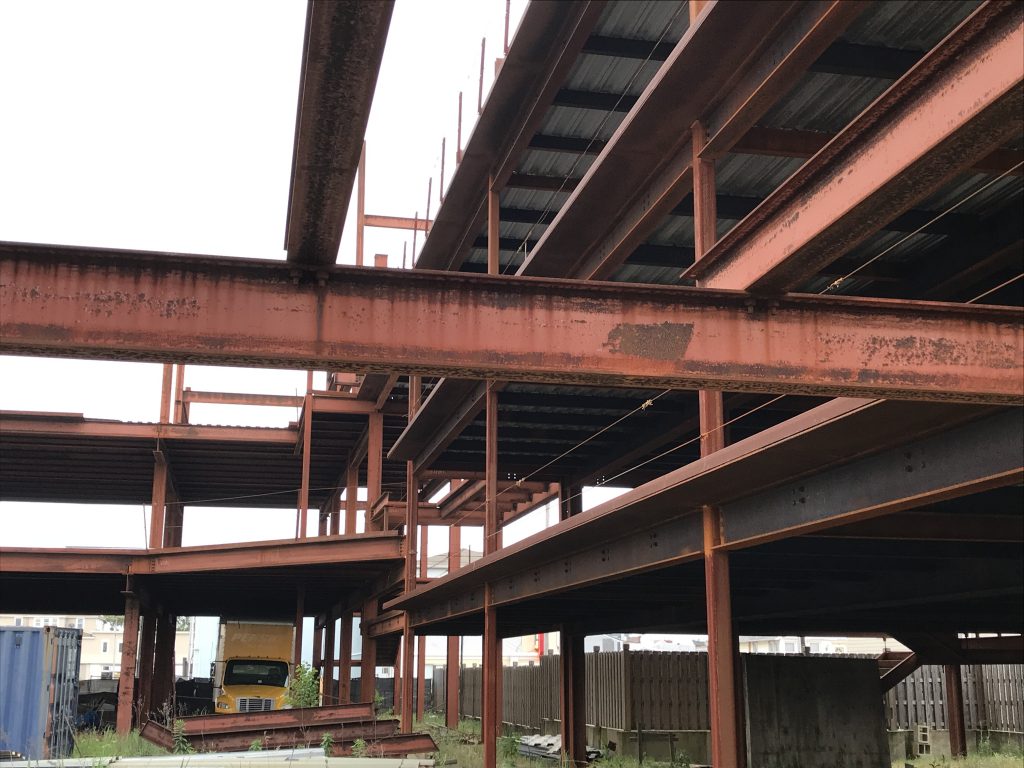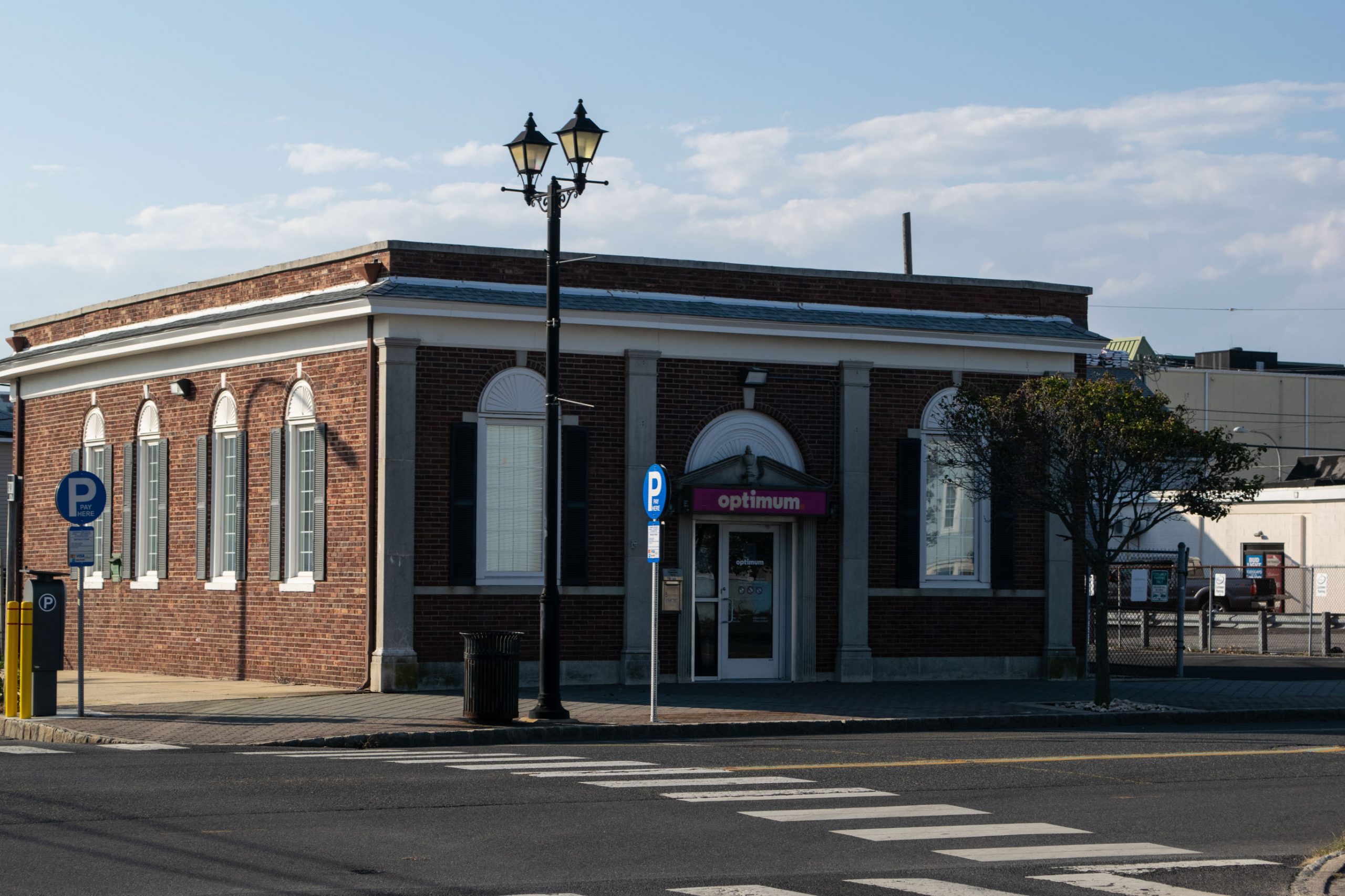Admitting his steel edifice is an “eyesore” in town, the owner of what was supposed to have been a grand nightclub complex has abandoned his plan, sold its liquor license and is now charting a different course for the unbuilt structure.
Vincent Craparotta, who also owns Hemingway’s Cafe, said his property at the corner of the Boulevard and Hamilton Avenue is moving on to its “next step.” Craparotta said some – but not all – of the steel will be removed from the site and the concrete holes that were supposed to have been pools amidst the glamorous nightspot will be demolished and filled in so the site can be graded. The liquor license he held for the property was sold to a new owner last month in inactive status; it is not known how that owner will utilize the license.

The steel structure at the Boulevard and Hamilton Avenue in Seaside Heights, June 5, 2019. (Photo: Daniel Nee)
“I’ve been trying to move it,” Craparotta told the Seaside Heights borough council at a meeting this week. “By selling the license, we know it’s not going to be a pool club at this particular stage.”
Engineers and designers have been hired and are coming to look at the site next week, said Craparotta, adding that the rear portion of the structure will be able to hold condominium units. The site as a whole could be developed as a mixed-use complex consisting of condos, specific Airbnb rental units and front-facing retail on the Boulevard.
“The designers are working on cutting it down in size,” Craparotta said.
The building has sat empty for more than 10 years, angering both residents and officials. Craparotta, for years, utilized a law passed in the wake of the 2008 financial crisis and extended after Superstorm Sandy that allowed permits for unbuilt or stalled projects to remain active, which precluded the borough from taking legal action. That law expired last year and the borough has since declared the site an area in need of redevelopment and has sought bids for redevelopers who would either buy it from Craparotta or from the borough following a condemnation. Craparotta, himself, can act as redeveloper if he submits a plan approved by the borough.

The steel structure at the Boulevard and Hamilton Avenue in Seaside Heights, June 5, 2019. (Photo: Daniel Nee)

The steel structure at the Boulevard and Hamilton Avenue in Seaside Heights, June 5, 2019. (Photo: Daniel Nee)
Craparotta said he has been approached by multiple investors interested in the site, but most wanted to pair it with a parcel on the other side of Hamilton Avenue owned by local businessman William Bennett. Bennett, Craparotta said, is not interested in selling his property, which currently is undeveloped and serves as a parking lot.
There are other hurdles as well, including the obligation to obtain a CAFRA (Coastal Areas Facilities Review Act) permit from the state if there are more than 24 residential units proposed for the site. The CAFRA approval process is notoriously slow-moving in New Jersey.
Craparotta said he has been considering developing the parcel in a number of ways with different height and layout variations, potentially up to 100-feet. But he would likely need relief from parking regulations under the borough’s zoning code. His professionals have been tasked with deciding “how much the building can take,” he said.
What’s Next
While the ultimate fate of the plot is still up in the air, Craparotta said he is currently gathering prices to remove “excess steel” and demolish the pools and other infrastructure that will no longer be of use. His plan is to first remove the pool facility, then utilize a crane to take down some of the steel.
“I’m hoping to have it done before the Fourth of July, before the crowds get here, so the fence can be pulled back and the site can be graded,” said Craparotta.
The site may be able to be used as a parking lot this year, he said.

The steel structure at the Boulevard and Hamilton Avenue in Seaside Heights, June 5, 2019. (Photo: Daniel Nee)

The steel structure at the Boulevard and Hamilton Avenue in Seaside Heights, June 5, 2019. (Photo: Daniel Nee)
“We’re proceeding and I’m trying to keep everybody informed, but what we know now is that it won’t be the facility that was originally designed,” Craparotta told council members. “I know you’ve been taking a lot of slack for the steel. We want to take down the part of the structure we’re not going to use.”
“If there’s something you’re going to do first, let’s take down the steel,” said Councilman Michael Carbone.
Craparotta replied that taking down the steel as a first step could involve blocking off a street for a crane in the middle of the summer, which is why he chose to deal with the pools first. He expects two floors of the steel superstructure will remain in place while the new project is designed.
“I’m hoping within maybe a month I could have conceptuals done so everyone can see what is going there at this particular time,” he said. “I know it’s an eyesore and I’m working on it.”

Advertisement

Police, Fire & Courts
Police Investigating Possible Shots Fired in Seaside Heights

Police, Fire & Courts
Cops: Juvenile Arrested After 118mph Joy Ride in Seaside Heights, Toms River Kills 2

Seaside Heights & Seaside Park
Seaside Heights Mourns Passing of Boardwalk Legend, Still Working Into His 90s








